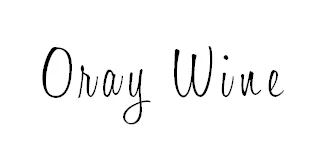
The townships of Barolo, La Morra, Castiglione Falletto, Serralunga d’Alba, and the northern half of Monforte d’Alba have historically formed the heart of the Piedmont region, as well as outlying areas in a number of smaller townships added over time.
The foundations of a protest were laid a long time ago
In 1909, the Agricultural Commission of Alba added Grinzano, part of Verduno, and a section of Novello, validating the Ministry of Agriculture’s prior delimitation work from 1896. This became the official designation of the zone in 1934, despite complaints from producers from both La Morra/Barolo as well as Castiglione Falletto. Indeed, they considered themselves the actual standard-bearers of legitimate Barolo.
Some additions which started to spark tensions
Parts of Diano d’Alba, Roddi and Cherasco were added in the DOC decree of 1966 (Barolo was just a DOC at the time; it was raised to DOCG status in 1980), which was a coherence error (at least on paper), even though growers in the zone had generally been careful to plant only Nebbiolo where it can ripen correctly.
The two main types of soil as markers of the two main Barolo styles

Although Barolo is always a rich, concentrated, and powerful wine with pronounced tannins and acidity, significant stylistic differences exist among the various wines of the zone and tend to reflect the two major soil types, which are conveniently separated by the Alba-Barolo road that runs along the valley floor, separating La Morra and Barolo to the west from Castiglione Falletto, Montforte d’Alba, and Serralunga d’Alba to the east:
- The first soil type, Tortorian calcareous marls that are comparatively compact, fresher, and more fertile, characterizes vines in La Morra and Barolo, producing softer, fruitier, fragrant wines that age rather quickly for a Barolo.
- The second kind of soil, from the Helvetian age, with a higher amount of compressed sandstone, is less compact, poorer, and less fruitful, resulting in more intense, structured wines that mature slowly at the cities of Monforte d’Alba and Serralunga d’Alba.
Castiglione Falletto’s vines are located on a spur that separates these two valleys, and they create wines that blend the delicate and forward character of La Morra with the structure and backbone of Serralunga.
Common traits shared by all Barolos
But all good Barolos; share certain common traits:
- a colour that is never deep in that it never producers opaque wines (a little like Pinot Noirs from Burgundy)
- a Ruby color trending to garnet or brick with age
- complex and expressive aromas of plums, dried roses, tar, liquorice and some nuances of white truffles
- substantial tannins
- dense texture
- alcoholic warmth

Obtaining DOCG status helped the development of single-plot wines
When Barolo was granted DOCG classification in 1980, it obviously contributed to the trend of estate bottling and single-plot wines, which in turn rewarded the efforts of quality-conscious growers and encouraged some degree of individual experimentation.
It is important to recall that previously, the marketing of Barolo wines was controlled by negociant houses, owing to the fact that the average property size in the region was roughly 1 hectare. As a result, negociant firms had to combine wines from various provenances in order to produce a quantity large enough to be commercially profitable.
This resulted in the consumer perception of this wine mainly through the negociants’ assemblage lens.
Estate bottling was both an attempt by peasant proprietors to maximize economic rewards from the production cycle and a desire to put their name in the public view.
The development of a new style of Barolo
With the change of the wine world, Barolo producers began to discover that their wines (particularly those from negociants) were being viewed as relics from the past, too robust and heavy for current tastes. This sparked an impulse to upgrade among certain wineries.
Producers began to use modern winemaking techniques such as fermentation temperature control, reduced maceration, pumping over (rather than immersion), small oak barriques usage, shorter time in oak barrels and longer bottle ageing time before releasing the product to the market.
This, combined with single plot wines, resulted in a new style of Barolo that was more fruity, less austere and therefore better suited to modern palates.

Traditional Barolo vs. Modern Barolo
This birth of the modern Barolo has been immortalized by the ‘Barolo Boys‘. However, this historic opposition between modern and classic Barolo styles is nowadways largely a journalistic delusion.
Wines from La Morra and Barolo, which are naturally more approachable in their youth, are usually better suited to shorter aging than those from Serralunga, where the greater intensity usually results in a lengthier time of barrel ageing before bottling.
Many producers have developed the historic trend for adding Barbera grapes to the iconic Nebbiolo grape variety (some even adding Merlot, Syrah or Cabernet) in order not only to augment the colour but also to add impactful ripe berry notes to the Nebbiolo more delicate character.
Indeed, a proposal in the mid-1990s to cut the minimum Nebbiolo content from 100% to 90% was defeated, but only after considerable discussion in the region.
Style wars continue to exist, but as in other wine regions, they are frequently between those who want to produce great wines and those who want to make them more drinkable.

Follow me on my Social Media
Wine is a gourmet treasure, do not abuse alcohol!
None of this content has been sponsored
I did not receive any gifts or free samples that could be related to this article